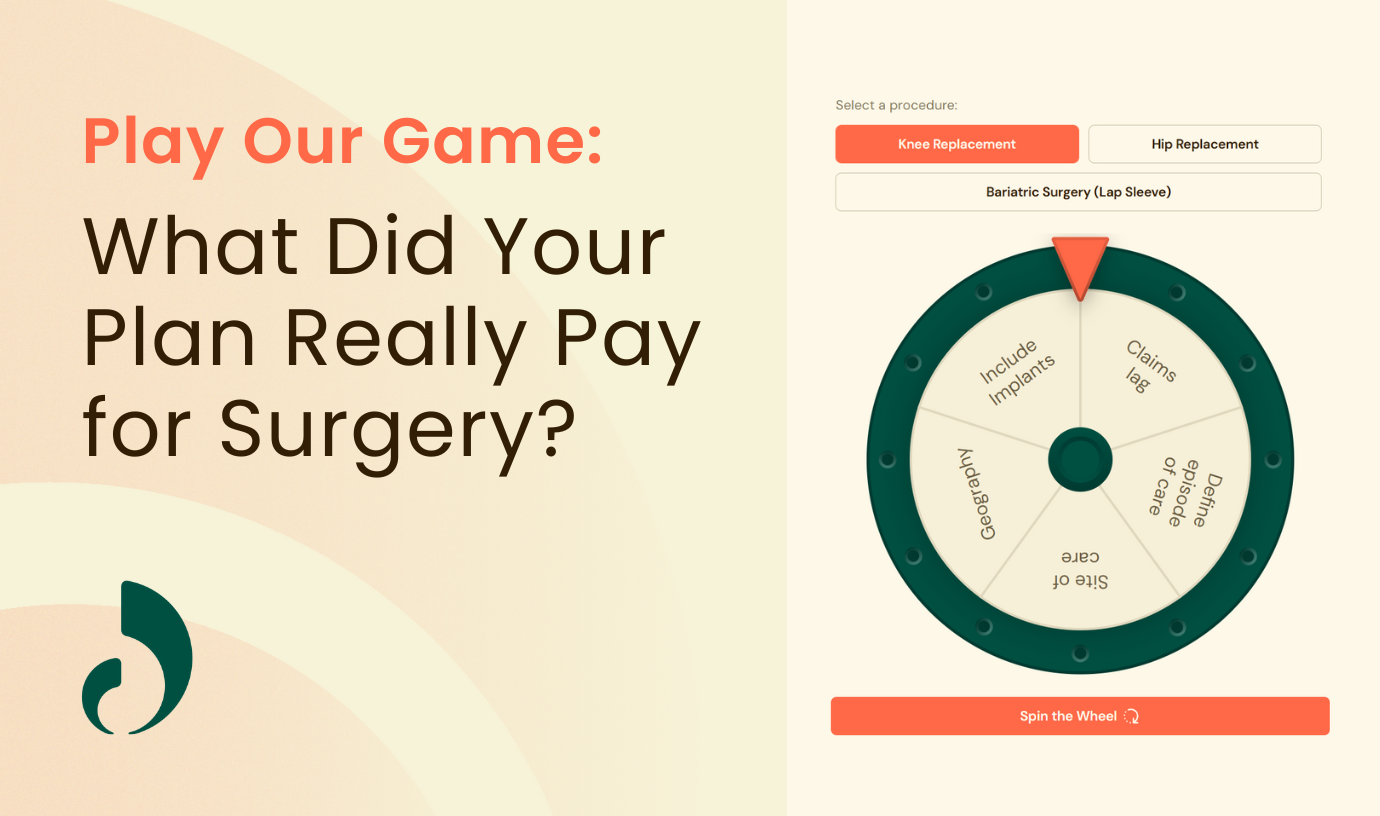Summary
- Next-gen COEs use a “physician-first” approach, ensuring clinical appropriateness and top-tier outcomes.
- By eliminating travel barriers, 98% of Lantern members stay within driving distance of care, averaging only 32 miles to a provider.
- Modern Center of Excellence programs like Lantern reduce total medical spend for employers by 4%.
Employers, unions and benefits leaders face increasing pressure to deliver high-quality care while controlling costs, especially for surgery, cancer care and infusions.
Centers of Excellence (COE) programs have emerged as a proven way to improve outcomes and reduce expenses, but the traditional COE model often falls short.
We’ve compiled the top COE FAQs below to demystify the model, address common misconceptions and show how an independent COE solution like Lantern can lower costs and deliver measurable results for employers and unions of all sizes.
Who Is Lantern and How Do You Define “Specialty Care?”
Lantern is an independent Center of Excellence network focused on making high-quality specialty care more accessible and affordable. We partner with top surgeons, hospitals and ambulatory surgery centers (ASCs) across the country to deliver exceptional outcomes while lowering costs for employers, unions and members.
We define specialty care as planned, non-emergent services that require advanced clinical expertise, most often surgical procedures. This includes high-cost, high-impact areas such as orthopedics, cardiac care, spine surgery, bariatrics, gastroenterology, and many others.
For cancer and infusion care, our approach emphasizes clinical integration and continuity. We connect members with oncology specialists who meet strict quality standards, coordinate with their existing care teams and ensure timely access to advanced treatments such as chemotherapy, immunotherapy and infusion services.
By targeting these complex and costly areas, Lantern helps employers and unions improve member health outcomes, reduce complications and capture significant savings.
Why Should We Prioritize our Spend for Specialty Care?
Specialty care, including surgery, cancer care and infusions, accounts for nearly 50% of total medical spend, making it one of the biggest cost drivers for employers and unions. Lantern helps cut that spend by 4%. That level of direct savings far exceeds most other point solutions.
Employers consistently rank affordability, cost savings, access to high-quality care and improved employee experience as top priorities. In fact, 82% of benefits leaders surveyed by Business Group on Health used COEs in 2025.
With the largest independent surgery network, Lantern keeps care local and inclusive, covering a wide range of procedures and patient needs. This scale drives industry-leading engagement, better outcomes and an average $20+ PEPM savings.
Is Your Specialty Care Strategy Future-Proof?

How is Lantern’s Model Fundamentally Different from Other COEs?
Lantern removes the limitations that often frustrate employers and members in traditional COE programs. Our model is more inclusive, covering all plannable procedures, including pediatric cases and patients with comorbid conditions, so more people can access excellent care.
Our approach is more holistic, focusing on clinical appropriateness, integrating seamlessly into the member experience, and setting the standard as the first COE with a Patient Safety Organization designation. Lantern also has an exclusive partnership with the Global Appropriateness Measures (GAM) Consortium that enhances our already rigorous process for vetting surgeons as we continue to build our network of specialists.
Finally, our savings methodology is fully transparent, and our pricing is aligned with your success—we only earn when you save money. This alignment ensures our incentives match yours, driving better outcomes, higher engagement and lasting value.
For many employees, the cost of surgery is out of reach, especially when one-third of privately insured households lack the savings to cover a typical deductible. Traditional COE models often require long-distance travel, adding costs and burdens for families with caregiving responsibilities.
Lantern’s model reduces these barriers, generating average savings of 55% per procedure and making surgery more affordable for everyone.
How Do You Make High-Quality Care Truly Accessible and Local?
Lantern eliminates the travel barrier via the largest independent surgery Network of Excellence in the country, with more than 725 facilities. This scale means members typically travel an average of just 32 miles to reach a top-tier surgical provider, keeping care close to home.
As a third-party administrator (TPA), we contract directly with both hospitals and ambulatory surgical centers, selecting only the surgeons who meet our rigorous quality standards. This approach ensures members receive the same caliber of care they might expect from a world-renowned COE, but without the disruption of extended time away from work or family.
Our Care Advocates coordinate every detail, from scheduling and pre-op testing to transportation, so members can focus on their health, not the logistics. By combining local access, personal navigation and waived cost-sharing in most plan designs, Lantern makes high-quality care easy to use.
How Do You Measure and Ensure the Quality of Care?
Lantern applies a rigorous, surgeon-first approach to quality. We start by evaluating individual surgeons because not all providers at a hospital or ASC meet our standards. To confirm their expertise and track record, we vet every surgeon on performance, experience and outcomes, and look at sub-specialization, board certification, fellowship training, procedure volume and appropriateness of care. We also evaluate the facilities where they operate.
This dual focus ensures our network combines the strengths of nationally recognized Centers of Excellence, like Johns Hopkins, HSS, Mayo Clinic and Cleveland Clinic, for complex cases, with a distributed network of local hospitals and ASCs for more routine surgical needs. The result is superior outcomes, greater accessibility and higher utilization compared to traditional facility-only models.
How Do You Work Alongside the Health Plan?
Lantern integrates seamlessly with carriers and health plans while maintaining the autonomy of a licensed third-party administrator (TPA). This allows us to manage claims, data and member engagement independently, while collaborating closely with carriers to ensure a smooth experience.
We use carrier-provided data, such as claims, prior authorizations and eligibility files, to identify and engage members early in their care journey. Lantern also integrates with navigator services and other vendors to receive referrals and deliver coordinated support.
As a TPA, we adjudicate all claims internally, ensuring accurate and efficient processing without relying on outside administrators. For deductible accumulators and other coordination needs, we connect directly with carriers. We also meet a wide range of data-sharing requirements and maintain active integrations with major carriers.
By combining the control of being our own TPA with strong integration capabilities, Lantern delivers a streamlined, high-touch experience for members, employers and carrier partners.
Lantern members benefit in multiple ways, including seeing a provider much sooner than in the traditional health system, white-glove concierge support, and free and low-cost procedures.
Can You Explain Lantern’s Pricing Model?
We leverage a performance-based pricing model, eliminating upfront costs with a guaranteed return on investment for clients who use our surgery and infusion solutions. We also offer flexibility by considering a PEPM model for select clients with fewer than 2,500 employees, based on plan design and specific needs.
For surgery and infusions through our Network of Excellence, we recommend a percent savings model so clients only pay us when they save. For cancer care, where we guide members within your existing network, we offer a monthly case rate for members engaged in our services or a fixed PEMP rate.
What Does the Experience Look Like for a Member?
A member’s journey with Lantern begins when they contact us through outbound marketing or an inbound referral. They are immediately connected with a dedicated Care Advocate who explains their benefits, answers initial questions and gathers health needs and personal preferences to match them with the best provider in Lantern’s network. If their employer or union also offers waived cost share, the advocate explains there’s no cost to the member.
Once the member selects a provider, the Care Advocate schedules appointments, coordinates pre-op tests or consultations and arranges transportation if needed. Following the initial consult, the surgeon may recommend avoiding surgery in favor of a more conservative treatment or proceed with the planned procedure.
If surgery moves forward, the Care Advocate manages scheduling, travel logistics if needed and ongoing communication to ensure a smooth experience. After treatment, they coordinate follow-up appointments, physical therapy and additional care needs.
This high-touch, empathetic approach guides members through every step, reduces stress, improves outcomes and ensures accessible, high-quality care.
How Does Lantern Help to Drive Member Engagement and Utilization?
We design every aspect of our solution to remove barriers. We start with plan design options tailored to each employer’s goals and culture. In a voluntary steerage model, members aren’t required to use the Lantern network, but strategic incentives, like waived costs or upfront copays, boost engagement and encourage utilization.
For employers and unions seeking to maximize participation, we also support mandatory steerage designs, which require eligible procedures to be performed within the Lantern network to receive full plan benefits. Our high-touch Care Advocate navigation and local-first network design ensure that even in a mandatory model, the member experience remains convenient and next-level.
Lantern’s member marketing team provides an Annual Engagement Plan to boost awareness and drive utilization. This includes:
- Annual awareness campaign
- Quarterly emails and direct mail pieces
- ID cards
- Targeted marketing programs
- Personalized outreach to members who may need surgical intervention
All materials can feature variable content, such as the client’s logo, company name, phone number and plan design, to ensure relevance and brand alignment.
By combining thoughtful plan incentives with personalized support, we consistently drive utilization rates far above the industry average.

What Kind of Reporting and Data Transparency Can We Expect?
Lantern provides transparent, actionable reporting and business reviews to help customers track savings, utilization and program impact. Partners can expect the following reports:
Percentage of Savings Detail Report (Monthly): Delivered with the client invoice, this line-item report breaks down savings from procedure costs, avoided complications and avoided procedures, showing both hard and soft dollar savings.
Weekly Claims Report: This timely report details claims, dates of service, procedure case rates and travel benefits, giving employers and unions real-time visibility into ongoing claims and financial activity.
Quarterly Utilization Report: Delivered every quarter, this report compares estimated carrier costs with what was paid through Lantern for each procedure category. It includes year-to-date data on completed procedures, case rates and savings in both dollars and percentages.
Business Reviews: We evaluate performance against goals, analyze trends, and identify opportunities for improvement in plan design, coverage, communications and accessibility.
Lantern also customizes reports to meet unique employer and partner needs, ensuring every customer has the exact data required to make informed decisions and measure success throughout the year.
“We can create really clear benchmarks of ‘Here’s exactly how much we’re saving you,’” says Dickon Waterfield, Lantern President. “You can validate it, you can justify it. And that means, again, employers pay us based on what we save them.”
What Employer Sizes Do You Work With?
Lantern has proven success with employers of all sizes, across geographies, industries, and workforce demographics, including major national brands, small businesses, unions and public sector organizations.
While we can support a wide range of organizations, we typically work with self-funded employers and unions with at least 1,000 employees or members.
What Types of Procedures do You Cover?
Lantern’s network is built to support members across a broad spectrum of surgical needs and health profiles. We cover nearly all non-emergent, plannable procedures typically included in a health plan, including orthopedics, cardiac, spine, gastroenterology, bariatrics, ENT, pain management and more.
We also include cases that many COE programs exclude, such as pediatric procedures and surgeries for members with comorbid conditions. By contracting with surgeons who meet strict quality standards and offering care in both hospitals and ambulatory surgery centers, we ensure the network works for diverse populations, not just the healthiest patients.
Additionally, we provide comprehensive cancer care and infusion services, ensuring members have access to advanced oncology treatments, immunotherapy and other infusion therapies close to home.
Our multilingual Care Advocates and culturally responsive navigation services remove language and logistical barriers. Waived cost-sharing in many plan designs makes high-quality surgical care financially accessible and inclusive.
Covered Procedures
- Orthopedic Surgery (Joint): Knee replacement/revision, hip replacement/revision, shoulder surgery
- Orthopedic Surgery (Other): Arthroscopy, ligament repair, rotator cuff repair
- Cardiac Surgery: Pacemaker implantation, valve surgery, cardiac ablation
- Interventional Pain Management: Epidural steroid injections, joint injections, nerve blocks
- Spine Surgery
- Genitourinary Surgery & Gynecology (GYN)
- General Surgery
- Otolaryngology (ENT) – ear, nose and throat procedures
- Gastroenterology (GI)
- Bariatric Surgery

What Does Implementation Look Like and When Can We Launch the Program?
Implementing Lantern is designed to be seamless and impactful. Our process delivers measurable savings and better health outcomes without disrupting your existing operations because we built it from the ground up to minimize effort for your team while maximizing results for your members.
A typical implementation takes 8 to 12 weeks, with about 90 days as the sweet spot. For more complex accounts, we may extend to 3 to 4 months to ensure every detail is handled smoothly.
For benefits leaders, the time commitment is light:
- One 60-minute implementation kickoff meeting
- Optional 30-minute biweekly status meetings
- One 60-minute review of eligibility requirements with your data provider
Your dedicated Lantern implementation manager oversees the project plan, coordinates all deliverables and keeps you informed every step of the way. Our account team works in parallel to prepare communications, integrate reporting and align operations so you’re ready for a successful launch.
You can launch at any time—not just at the start of your plan year—giving you flexibility to begin realizing savings right away.
How Does Lantern Integrate With Other Point Solution Partners?
Lantern works alongside other health and wellness solutions to ensure members experience coordinated, connected care. We integrate with third-party partners such as Hinge Health and Pelago to provide smooth referrals and handoffs, so members can move between solutions without confusion or delays.
For example, a member starting a musculoskeletal journey with Hinge Health may later be referred to Lantern for a surgical consult if conservative treatment is not enough. Likewise, members working with Pelago for substance use support can be connected to surgical or infusion care when related medical needs arise.
Can You Describe the Billing Process and Frequency?
Lantern’s billing process is simple. As a licensed TPA, claims for care are processed weekly for surgery and infusions. Cancer care invoices are billed monthly based on the client’s chosen pricing model.
Clients are invoiced monthly for Lantern’s fees, which are based on the selected pricing model and programs/care offered.
Turning COE Insights Into Action
Next-generation Centers of Excellence equip benefits leaders with a strategic tool to deliver better care, improve employee experience and achieve measurable savings. Lantern’s independent COE model pairs local access with uncompromising quality, inclusive coverage and transparent results, making it easier for members to use and for employers and unions to see the impact.
By combining a surgeon-first approach, high-touch navigation and data-driven outcomes, Lantern transforms how members access specialty care, from surgery to cancer treatment and beyond.
Learn How Lantern Can Help You Build a High-Impact COE Strategy
Contact us today to start the conversation to improve outcomes and cut costs.




